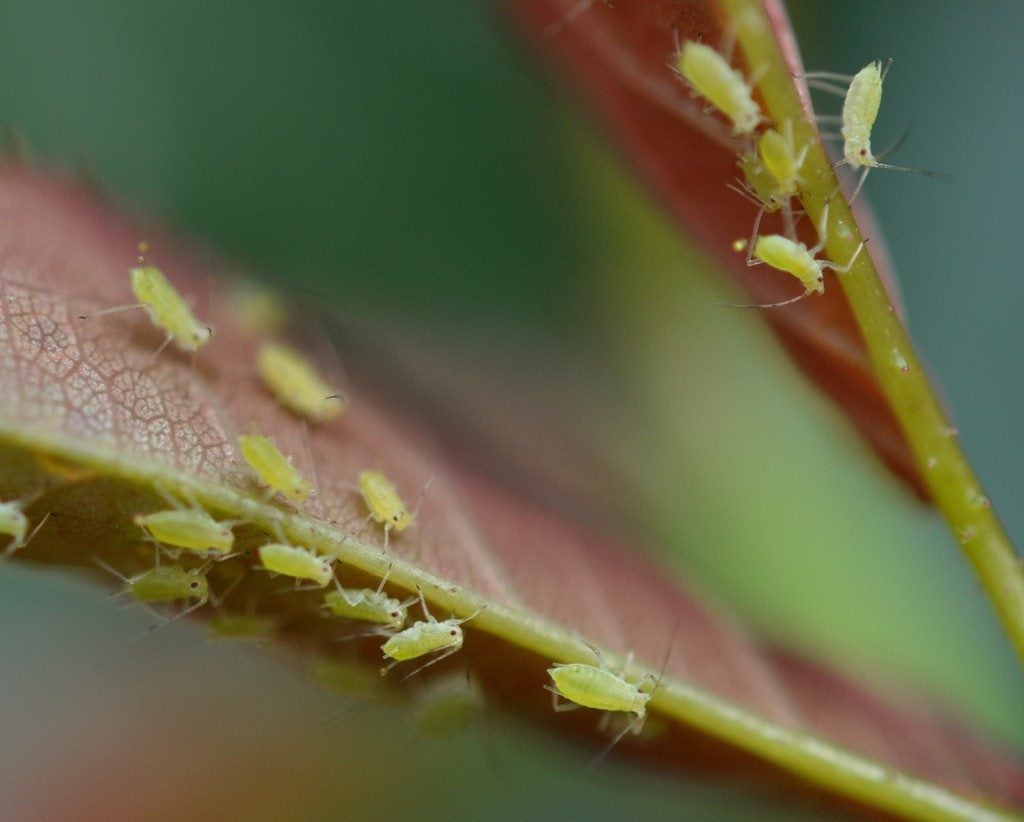Controlling Leaf Curl Plum Aphids - Leaf Curl Plum Aphid Treatment And Prevention


Leaf curl plum aphids are found on both plum and prune plants. The most obvious sign of these aphids on plum trees is the curled leaves they cause by their feeding. Fruit tree management is necessary for good production. Large populations of these pests can minimize tree growth and fruit sugar production. Control plum aphids with a mixture of cultural and physical methods, with chemical formulas reserved for extreme infestations.
Leaf Curl Plum Aphid
Aphids on plum trees that are found inside curled leaves are leaf curl plum aphids. The pests are tiny and have shiny bodies that range from pale green to light yellow in color. The insect produces a high volume of honeydew, which is the excretion of the aphid. This in turn attracts ants that feed on the sweet liquid and causes a fungus to form that produces sooty mold. Plum aphids cause leaves to curl as they suck the tree's fluids. The eggs of the aphids overwinter on plum and prune trees but may move to other plant hosts as adults. Leaf curl plum aphid treatments may help minimize fruit loss and increase plant vigor if the pest is properly identified and treatments begin at the correct time.
Aphids on Plum Trees
Damage to fruit trees by these aphids starts with the feeding on young terminal shoots. This can affect the growth of the tree and reduce the foliar canopy as the new leaves curl and die. It is important to control plum aphids, as populations can quickly get out of hand and serious infestations drain plant reserves. The aphids hatch just at bud break on the tree and begin feeding immediately on shoots and then on the underside of leaves. The curled leaves create a shelter for the pests. Early observation of the shoots can help indicate if you have leaf curl plum aphids and increase the chance of management of the insects.
Leaf Curl Plum Aphid Treatments
You can apply cultural methods to control leaf curl plum aphids. Use quick, hard blasts of water to rinse off the insects. Limit nitrogen fertilizers, which force the formation of tip growth, one of the insect's favorite plant parts. There are also several biological treatments in the form of natural predators. Lady beetles, green lacewings, and syrphid fly larvae are another way to control plum aphids. If necessary, use dormant season chemical treatments of horticultural oil. Severe aphid infestations require growing season applications of a leaf curl plum aphid treatment such as neem oil, imidacloprid, pyrethrins, or non-toxic insecticidal soap.
How to Control Plum Aphids
Apply superior type horticultural oil according to the directions in the dormant season. Spray in early November and then monitor the plant during the remainder of the dormant period. Read the manufacturer's instructions for rate of application and amount of dilution. During the growing season, once the buds have broken, use repeated applications of leaf curl plum aphid treatment. Best results are found when you alternate one treatment with another to reduce resistance build up in the insects.
Sign up for the Gardening Know How newsletter today and receive a free copy of our e-book "How to Grow Delicious Tomatoes".

Bonnie Grant is a professional landscaper with a Certification in Urban Gardening. She has been gardening and writing for 15 years. A former professional chef, she has a passion for edible landscaping.